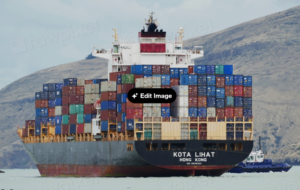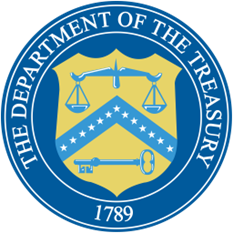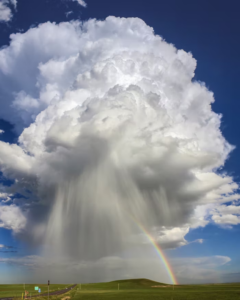Introducing the Sustainable Missions Act
by Daniel Wortel-London

Just as a fighter pilot has a mission, federal agencies have missions as well. They should promote sustainability. (Pixabay, Creative Commons 1.0)
What’s your mission? While few can answer this question quickly, most of us recognize the importance of a mission to an individual or an organization. A mission provides direction, a framework of goals, and a basis for developing the strategies we need to reach them. In the USA, every cabinet-level department must develop a mission as part of its broader strategic planning process.
Unfortunately, most federal mission statements tend to promote planet-destroying economic growth or attempt—in vain—to reconcile growth with conservation goals. This creates discordance both within and across federal departments while doing nothing to shrink our economy’s ecological footprint.
For this reason CASSE proposes an overhaul of federal mission statements, through the Sustainable Missions Act (SMA), to better align them with a steady state economy. This Act, a crucial component of the broader Steady State Economy Act, will embed principles of ecological economics in the mission statement, and hence in the operations, of the U.S. government’s most influential departments and offices.
Having a Mission
A mission statement, put simply, is an attempt to answer the question “Why do we exist?” While the question might sound philosophical, every organization has a tacit sense of what they are “about.” But a disconnect occurs when our actions fail to align with mission—or worse yet, when we’ve been pursuing the wrong mission all along.

Should the Department of Commerce promote ever more of this? (Rawpixel, Public Domain).
This is why many corporations and public bodies work hard to develop and update their mission statements. Missions give direction to an organization and prevent a firm from pursuing inappropriate or outdated goals and objectives. They provide a basis for reconciling disagreements within a firm by suggesting the broader values that should guide decisions. And they can summon public and political support for an organization by tapping into broadly shared values and goals.
Since 1993, every cabinet-level department in the USA has been required to develop a mission statement as part of a broader strategic plan. The Office of Management and Budget provides a framework for these missions. The mission statement should be “brief, defining the basic purpose” of the agency, and corresponding directly with the agency’s core programs and activities. It provides the basis for each agency’s strategic plan, which they are legally required to produce every four years. And it’s not just cabinet-level departments and their primary agencies. Many offices, bureaus, and other federal bodies have mission statements as well. A recent survey of 617 federal agencies found that 527 of them (85.4 percent) featured accessible mission statements on their websites.
The Wrong Direction
Unfortunately for those concerned about our future, most federal mission statements do not lend themselves to sustainability. This is most clearly expressed in the mission statements of departments devoted to economic growth. The U.S. Department of the Treasury claims that its mission is, among other things, “promoting the conditions that enable economic growth.” The Department of Commerce (DOC) similarly states that its mission is “to create the conditions for economic growth.” And the Economic Development Administration asserts that its mission is to “prepar[e] American regions for growth and success in the worldwide economy.”

The Department of the Interior’s steady-state mission, in a picture. (James Wheeler, Flickr)
But the problem isn’t just explicit endorsements of destructive growth within mission statements. It is also with their too-vague definitions of conservation and environmental protection. The Environmental Protection Agency (EPA), for example, claims that its mission is to “protect human health and the environment.” But it then goes on to state that it works to ensure that “environmental stewardship is integral to . . . economic growth.” By not specifying the meaning of environmental stewardship and how to achieve it, the EPA’s mission gives too much leeway to promoting growth-accelerating policies.
Along similar lines, the Department of the Interior’s mission is to “protec[t] and manag[e] the nation’s natural resources.” But because it does not specify what protecting those resources means, the DOI’s strategic plan endorses “enhanc[ing] the Nation’s economic growth” as a desired consequence of its activities.
This lack of clarity also applies to departments concerned strictly with economic matters. For example, the Department of the Treasury states that its mission is to enable “economic growth and stability.” Yet we know that these two values are ultimately contradictory. Such a contradictory mission translates into contradictory strategic goals. For example, the Department of the Treasury asserts that its goals are to “promote equitable economic growth,” “protect financial stability and resiliency,” and “combat climate change.” As long as economic growth remains a goal (goal number one, according to the plan), financial stability and combatting climate change will not only be ignored, but imperiled.
And if vague and misdirected missions can cause contradictions within agencies, they can cause even more havoc across agencies. It makes no sense to have federal agencies working at cross-purposes. Yet the antithetical missions of major bodies like the DOC and the EPA ensure that this continually happens.
The result is that the federal government is pursuing the wrong goals (“economic growth”) while pursuing appropriate goals (“financial stability,” “protecting and managing the nation’s natural resources”) ineffectively.
Changing Course

Let’s harness the power of the Treasury to promote the steady state economy. (Department of the Treasury).
Revising these missions would begin by making the terms and definitions of ecological economics central to them. Terms like “natural capital,” “sustainable economic development,” and “steady state economy” would be key features of these missions. The missions would then be drafted to ensure that each agency’s functions and operations were explicitly linked to promoting steady-state objectives.
It is not necessary to revise the missions of all 527 U.S. agencies and subagencies. Agencies like the Alcohol and Tobacco Tax and Trade Bureau are not as likely to play a key role in transitioning to a steady state economy as are the Departments of Energy or Commerce.
The full list of amended missions is in the bill, but here is a sample:
- “The mission of the U.S. Department of Commerce is to create the conditions for sustainable economic activity and opportunity for all communities by driving U.S. economic competitiveness, strengthening domestic industry, and promoting quality employment in all communities across the country.”
- “The mission of the U.S. Department of State is to protect and promote U.S. security, sustainable economic activity, principles of steady-state economics in international diplomacy, and democratic values, and to shape an international environment in which all Americans can thrive alongside citizens of all nations.”
- “The mission of the U.S. Department of the Treasury is to maintain a stable, steady state economy while creating sustainable economic and job opportunities; strengthen national security by protecting the stability of the financial system; and manage the U.S. Government’s finances efficiently.”
- “The mission of the Economic Development Administration is to promote sustainable and equitable economic activity in all of America’s communities, consistent with the maintenance of a national steady state economy.”
Who should be responsible for amending the missions of government agencies? Typically, Congress does not dictate mission amendments. Rather, changes in mission are taken up by the staffs of the agencies themselves. They are modified as staff are turned over with the onset of new presidential administrations. For example, Donald Trump appointees adjusted the mission statements of the National Security Agency, U.S. Citizenship and Immigration Services, and the Consumer Financial Protection Bureau to better serve the Administration’s priorities. But because administrations come and go while planetary boundaries remain, federal mission statements need to be set via statutory law rather than presidential caprice.
Provisions

Even the National Weather Service could assume a new purpose consistent with a steady state economy. (Unsplash, NOAA)
Following a short title section, Section 2 of the Sustainable Missions Act provides definitions of “agency,” “natural capital,” “steady state economy,” and “sustainable economic development” within the Act.
Section 3 amends the missions of selected cabinet-level departments: Agriculture, Commerce, Housing and Urban Development, Interior, Labor, State, Transportation, Treasury, and Energy.
The next section amends the missions of selected lesser agencies, including (among others):
- Agency for International Development
- Army Corps of Engineers
- Bureau of Economic and Business Affairs
- Bureau of Energy Resources
- Bureau of Reclamation
- Economic Development Administration
- Environmental Protection Agency
- Federal Reserve
- Federal Trade Commission
- International Trade Administration
- National Ocean Service
- Small Business Administration
Finally, Section 5 requires all agency directors to review and replace any sub-departmental mission statements, as well as any strategic plans, policies, rules, or regulations, that do not align with the declarations of the Act.
The Sustainable Missions Act is a crucial component of the broader Steady State Economy Act. We encourage you to read it and spread the word about it, and to post your thoughts below.
Daniel Wortel-London is a CASSE Policy Specialist focused on steady-state policy development.



Thank you! This article advances things significantly. Economic development policies and practices at nearly every level are deeply flawed because they are rooted in extreme ecological illiteracy to which most policy makers are blind and/or indifferent. And they’re hydra-headed as conflicting missions and mandates within goverment agencies clearly demonstrate.
This is excellent.
All I can add: thinking long term is a big change for many. On a personal level I’m baffled that so many people think only of short term gain in their personal lives (with terrible consequences that are easy to predict). And yet, short term thinking is everywhere, including federal mission statements and charters.
I’d say that in early stages of getting an agency to come to terms with long term viability, we should be tolerant of policymakers saying in effect “we don’t know yet how this will work long term.” Just getting policymakers to acknowledge uncertainty is a first step.